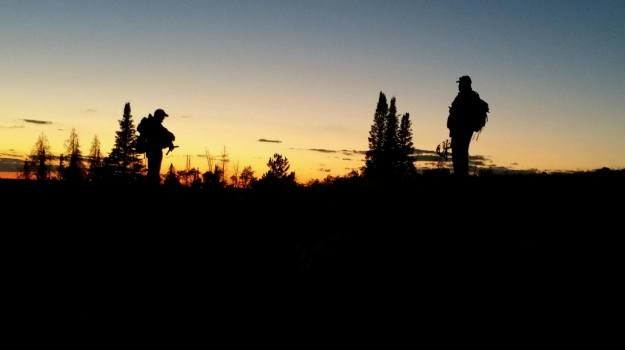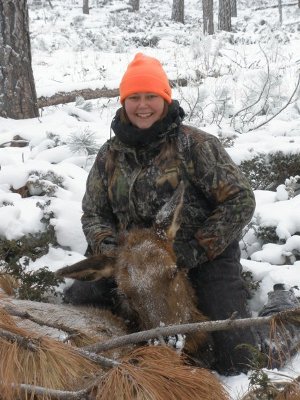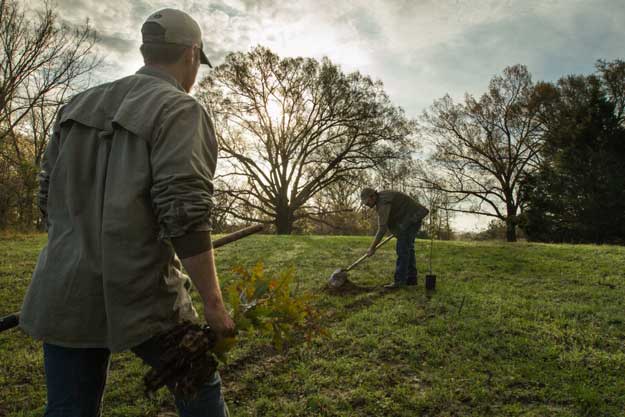
A resident elk tag costs just under $50, and a mule deer tag is about $32. If I have both tags and hunt during bow season, I can take a bull elk, a cow elk or a mule deer for less than $100 as a resident. If I'm unsuccessful taking a bull elk during bow season, I don’t have to eat that bull tag or take a raghorn bull during bow season, because it converts into a cow tag. I really don’t want to waste a bull tag during early season knowing that I can take a cow during the late season. Another reason that I concentrate on mule deer during the early bow season is because in some units you can take either a mule deer or a whitetail. In other units, you only may be able to take a whitetail or a mule deer on your deer tag. Really and truly I have three great options by hunting archery season in Wyoming. I can take a bull elk, and depending on the units I hunt in, I may have the option of taking a big whitetail or a big mule deer, if one comes by my bow stand. Some of our mule deer units now have antler restrictions. In these units, a buck has to have at least 3 or more points on one side of his rack before he can be taken.
For most folks who hunt elk in Wyoming and many other western states, finding and downing the elk is the first major problem. Then they worry about how to get that elk out of the backcountry! My buddies and I have pretty much solved that problem by using the gutless form of field dressing an elk. We split the hide down the back to remove the backstraps, the hindquarters, the neck roast and the front shoulders. Then we reach inside the elk’s ribcage and remove the tenderloins. Once we've gotten all the edible meat taken off the elk, we bone that meat out and just leave the hide, guts and bones where we’ve downed the elk. Then we pack our meat out with pack frames. We've found that this is a much faster way to field dress an elk, and we only have to carry the meat out and not the bones.
 A nice sized cow elk will produce about 250 pounds of good edible meat. If two guys are feeling pretty tough, they can carry all the meat from one cow out in one trip. But if you have three guys carrying out the meat from one cow elk, that trip is a lot easier. If you're by yourself, depending on how far you are from your vehicle, and how young and strong you think you are, you can carry all the meat from a cow in two or three trips. During bow and rifle hunting season, I usually hunt with one or two friends. If we take an animal, we can share the load to carry the meat out. But during late cow season, I usually only hunt with my wife, Emma, who shoots a Remington 700 .25-06 caliber, and I shoot a 300 short Mag.
A nice sized cow elk will produce about 250 pounds of good edible meat. If two guys are feeling pretty tough, they can carry all the meat from one cow out in one trip. But if you have three guys carrying out the meat from one cow elk, that trip is a lot easier. If you're by yourself, depending on how far you are from your vehicle, and how young and strong you think you are, you can carry all the meat from a cow in two or three trips. During bow and rifle hunting season, I usually hunt with one or two friends. If we take an animal, we can share the load to carry the meat out. But during late cow season, I usually only hunt with my wife, Emma, who shoots a Remington 700 .25-06 caliber, and I shoot a 300 short Mag.
I've never been on a major elk depredation hunt, but I've heard from some folks that a private landowner often will call the Game and Fish Department and say, “I've got 200 elk on my property right now. Can you round up some hunters to come and harvest some of these elk to help get them off my land?” That can be a Wild West style elk cow hunt, but I prefer to avoid crowd hunting as much as possible. If I see a couple of vehicles in the area where I want to hunt, I’ll usually go to another place. My objective in taking cows in the late season is to try to get as far away from other hunters as I can. To achieve that objective, I usually hike into the areas where I'm going to hunt.
In the foothill country, the wind usually blows a lot of snow off the areas that I hunt, but I have hunted on snowshoes, when the snow gets a little deep. I have traveled as far as 3 miles on snowshoes. When I'm hunting on snowshoes, I hunt broken timber. We call the area where I hunt sagebrush steppe. One of the advantages of hunting in snow country is that one man can get all his meat out by himself. To accomplish this task, I’ll take an ice-fishing snow sled to the spot where I've downed the elk, pack all the meat on that sled, and then I can pull the sled across the snow fairly easily. Those ice-fishing sleds are very effective and are a very-easy way to get elk meat out, if snow’s on the ground.



























